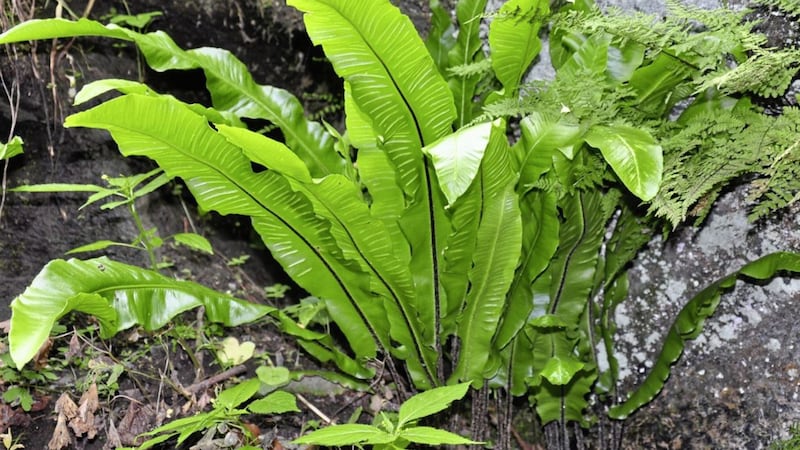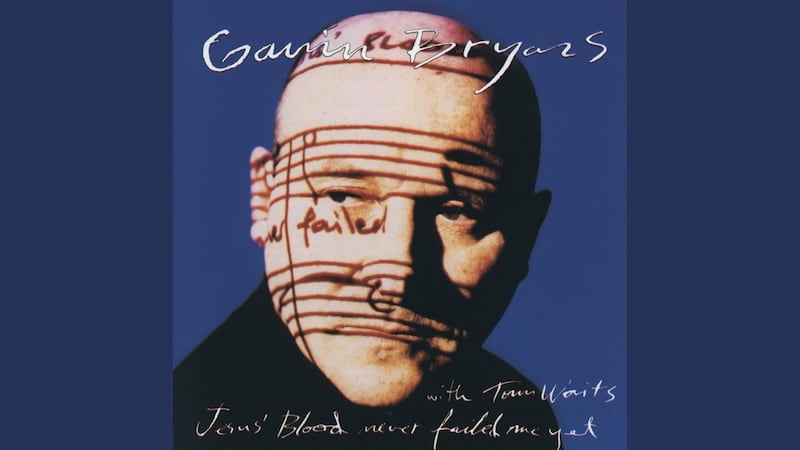I’VE been thinking lately how much we take our senses for granted, those windows to the world, and how the treadmill of living dulls our appreciation of experiences they give us.
Most days I walk familiar routes, passing similar landmarks; a bend in the river, a particular tree, banks or hedgerows. Such repetition brings complacency when looking at certain things along well-trodden paths.
A fern whose lineage, according to fossil records, stretches back to around 360 million years ago is a plant I’ve given a frequent glance, but have neglected to properly acknowledge.
It took the presence of a grey wagtail, dancing and bobbing nearby recently, to prompt my first serious consideration of the native Hart’s-tongue, as it hung in clusters from the damp rocky crevices of the riverbank, its undivided fronds, glossy green and shiny.
The tongue-shaped pointed leaves along with ‘hart’, the name for an older male red deer, give rise to its name, resembling a ‘deer’s tongue’ or ‘teanga fia’ in Irish.
Some other names have been noted for the fern such as ‘cow tongue’ (Hart, 1898) and ‘fox’s tongue’ (Colgan 1904).
The sporangia which produce and contain the spores are arranged in lines along the underside of the leaves resembling a centipede’s legs, hence the species name 'scolopendrium', Latin for centipede. Ferns reproduce by releasing these spores and have neither seeds nor flowers.
Though battered by recent storms and fluctuating water levels, the arching leaves of these ferns will soon be replaced by new luxuriant blades unfurling in late spring.
Hart’s-tongue, which prefers woodlands, hedgerows and damp shady places, is just one of the many fern varieties found in Ireland. Their graceful feathery fronds have fascinated poets and writers for centuries. In his poem The Stolen Child (1886) WB Yeats, reaching for the innocence of childhood again, writes of the lure by the fairies:
"Leaning softly out?From ferns that drop their tears?Over the young streams" to
"Come away, O human child!?To the waters and the wild’".
Another giant of the Romantic poets, Coleridge in an early version of the poem This Lime-Tree Bower my Prison (1797), writes of "the ferny rock/Whose plumy ferns forever nod and drip". He later wrote in one of his notebooks, "An eminently beautiful object is Fern".
In the Irish legend of Mad Sweeney, the outcast King castigates fern, saying "There is no bed for an outlaw/In the branches of thy crests".
Like many plants with such longevity, hart’s tongue has been used for medicinal purposes by past communities to treat coughs, digestive problems and open wounds.
Culpeper’s Complete Herbal (1653), still in print today, said of the plant, "Hart’s Tongue is much commended against the hardness and stoppings of the spleen and liver, and against the heat of the liver and stomach, and against the bloody-flux. Dioscorides [a Greek physician] saith, it is good against stinging or biting of serpents."
A record from Co Limerick in a manuscript of the Irish Folklore Commission tells how hart’s-tongue leaf was burned and applied to cure burns. It is also thought that fern was used to brew ale in early Ireland. In the Lebor Gabála, or Book of Invasions, Malaliach is said to have been the first brewer in Ireland making lind ratha or ‘fern ale’.
The male grey wagtail showed off its black throat and bright yellow underside as it moved along the river bank in search of food, before flying off downstream, in undulating pattern low above the water and out of sight, its job of drawing me towards the fern, now done. Keep well.








